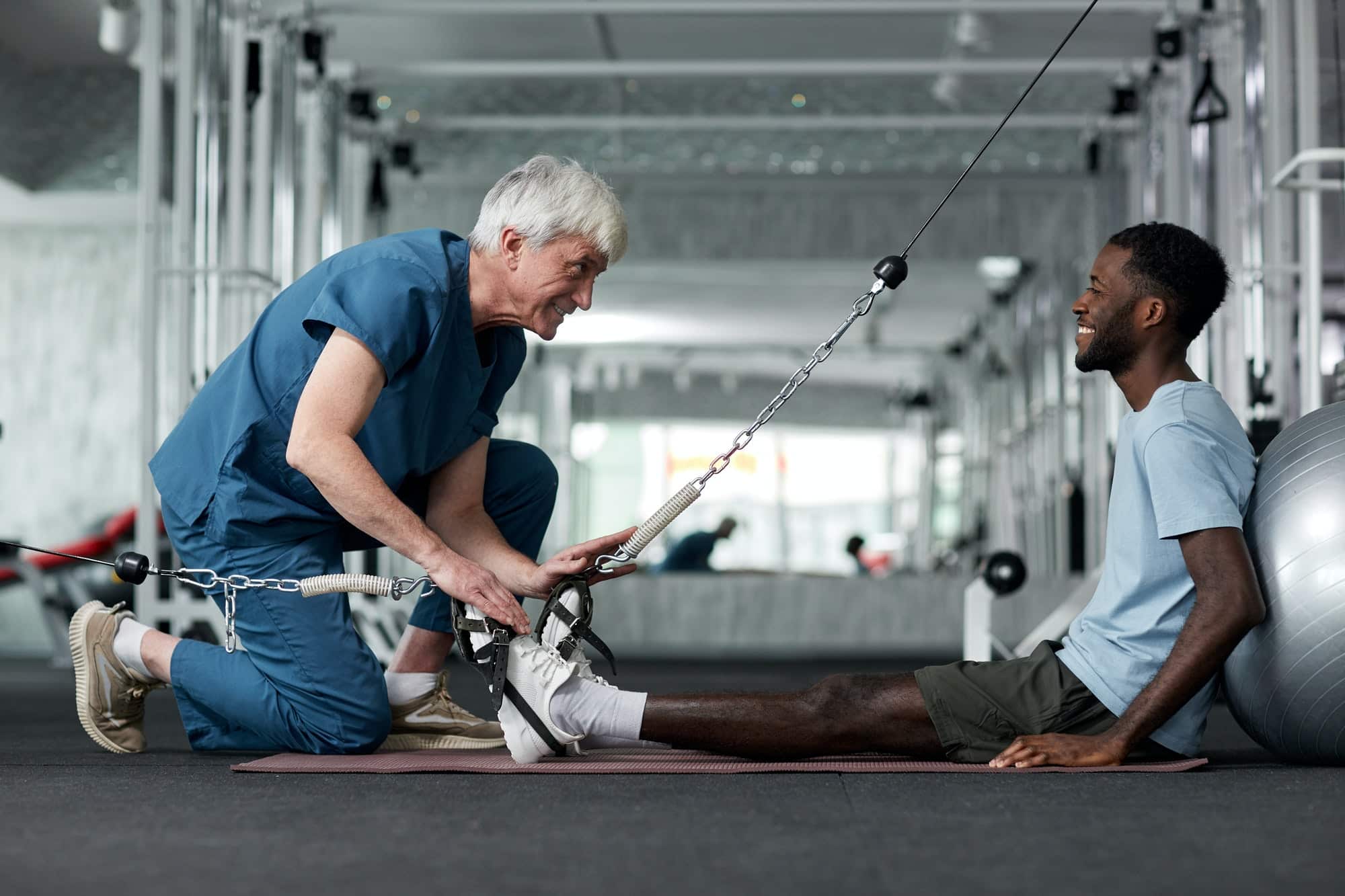What’s the Potential of Virtual Reality for Enhancing Patient Rehabilitation?

As we navigate through the 21st century, technology continues to make significant strides in our daily lives, including healthcare. One extremely promising area of development is the use of virtual reality (VR) for patient rehabilitation. Experts and scholars are optimistic that VR could revolutionize the way we approach rehabilitation therapy. This technology can provide immersive, controlled, and personalized environments for patients to safely engage in physical and cognitive exercises.
Virtual Reality: A New Frontier in Healthcare
Virtual reality, as a technology, is not new. However, its application within the healthcare industry is an emerging field with massive potential. Virtual reality is a computer-generated simulation that allows users to interact within an artificial 3D environment using special electronic devices, such as VR glasses or gloves. This technology has been adopted by several sectors, from entertainment to education, and now, healthcare.
En parallèle : What Are the Best Eco-Friendly Travel Destinations in the UK?
Companies like Google have been pioneering the development of healthcare-based VR applications. These applications can be employed for various treatments including pain management, cognitive rehabilitation, and physical therapy. They offer a more engaging and enjoyable experience to patients, thereby improving therapy adherence and outcomes.
Virtual Reality for Physical Rehabilitation
Physical rehabilitation can be a challenging process for many patients. Traditional methods often require strenuous exercises that may cause discomfort or even pain. However, the introduction of VR into physical therapy presents a game-changing alternative.
En parallèle : How to Promote STEM Education Among Underrepresented Groups in the UK?
Virtual reality can offer engaging and immersive physical rehabilitation exercises, which can motivate patients to stick to their therapy routines. Patients can perform their rehabilitation exercises in virtual environments that mimic real-world conditions but without the risks associated with physical environments.
Several studies have shown the potential benefits of VR-based physical therapy. For instance, a study conducted by the VR Health Group demonstrated that stroke patients who underwent VR-based rehabilitation showed significant improvements in their motor skills compared to those who received conventional therapy.
Virtual Reality for Cognitive Rehabilitation
Apart from physical rehabilitation, virtual reality also holds promise for cognitive therapy. Cognitive rehabilitation aims to improve cognitive functions such as memory, attention, and problem-solving skills in patients with neurological conditions.
Virtual reality offers a unique platform for cognitive rehabilitation by providing an interactive and immersive environment. This technology enables patients to engage in cognitive exercises that are designed to be both therapeutic and entertaining. A group of scholars from the VR Cognitive Therapy Study reported that patients with cognitive impairment showed significant improvement after undergoing VR-based cognitive therapy.
Virtual Reality for Pain Management
Pain is a common symptom in many health conditions, and managing it can be a major challenge. However, VR technology is showing potential in offering effective pain management strategies.
Using VR for pain management involves distracting the patient’s mind from the pain. For example, a patient can use a VR headset to transport themselves to a calming beach or a serene forest. This method of distraction has been shown to be effective in reducing perceived pain levels.
A study led by the Pain Management Research Group found that patients who used VR-based pain management techniques reported a significant reduction in their pain levels compared to those who used traditional methods.
The Future of Virtual Reality in Patient Rehabilitation
While the potential of VR in patient rehabilitation is evident, it’s important to note that this technology is still in its early stages. Further research and development are needed to maximize its full potential and make it accessible to all patients. However, the advancements made so far have shown that VR has the potential to transform patient rehabilitation and contribute to the overall improvement of healthcare services.
Incorporating VR technology into patient rehabilitation will not only enhance the patient’s therapy experience but also improve recovery outcomes. With continuous research and development, virtual reality might soon become a standard tool in patient rehabilitation.
While we await further advancements, let’s continue to explore the promising potential of virtual reality in enhancing patient rehabilitation. As we march through the digital age, we might just be on the brink of a healthcare revolution.
Harnessing Virtual Reality for Rehabilitation: Current Limitations and Challenges
As with any pioneering technology, effective incorporation of virtual reality in patient rehabilitation does face its own set of challenges. One of the primary concerns is the cost of the VR equipment and the feasibility of its implementation on a large scale. While giants like Google and other tech companies are ensuring the steady advancement of this technology, the cost of VR headsets and the necessary supporting infrastructure can be prohibitive for many healthcare providers.
Another concern is the potential for side effects. Some patients have reported feelings of nausea or dizziness after using VR, commonly referred to as ‘cybersickness’. Ensuring that this technology is safe and comfortable for all patients is a major consideration.
Furthermore, the need for more extensive and rigorous research cannot be overstated. For the technology to gain broader acceptance, randomized controlled studies have to delineate and validate the benefits of VR rehabilitation over conventional methods. While findings from the VR Health Group and the Pain Management Research Group are promising, a larger body of evidence from multiple PubMed Crossref and Google Scholar articles is required.
Lastly, there is a need for personalized VR rehabilitation programs. Just as every patient is unique, so should be their rehabilitation program. Customizing VR environments and programs to suit the individual needs of each patient may present a challenge, but this is where the promise of VR truly lies.
Conclusion: Towards a Virtually Enabled Future in Rehabilitation
The potential and promise of virtual reality for enhancing patient rehabilitation are undeniable. From physical therapy and cognitive rehabilitation to pain management, VR offers a new world of therapeutic possibilities. Despite the challenges and limitations, the potential benefits to both patients and healthcare providers far outweigh these concerns.
As Google and other tech companies continue to drive technological innovation, and as Crossref Google and PubMed Crossref scholars continue their research, it is not an overstatement to say that we are standing on the brink of a significant shift in how we approach patient rehabilitation.
Moreover, with the possibility of personalized, immersive, and engaging therapy sessions, patients may find themselves more motivated to adhere to their rehabilitation programs, resulting in improved outcomes. And for healthcare providers, the prospect of being able to offer more effective, efficient, and patient-centered care is certainly enticing.
The journey towards harnessing the full potential of virtual reality in healthcare is just beginning. As we continue to navigate the digital age, it is an exciting time for both patients and providers as we eagerly anticipate the next wave of advancements in VR-enhanced patient rehabilitation.
The future of virtual reality in patient rehabilitation is indeed bright and filled with unlimited potential. We look forward to a future where VR technology is not just an add-on but an integral part of every rehabilitation program. By marching forward through the digital age, we are not just exploring the potential of virtual reality but actively participating in shaping the future of patient rehabilitation.
